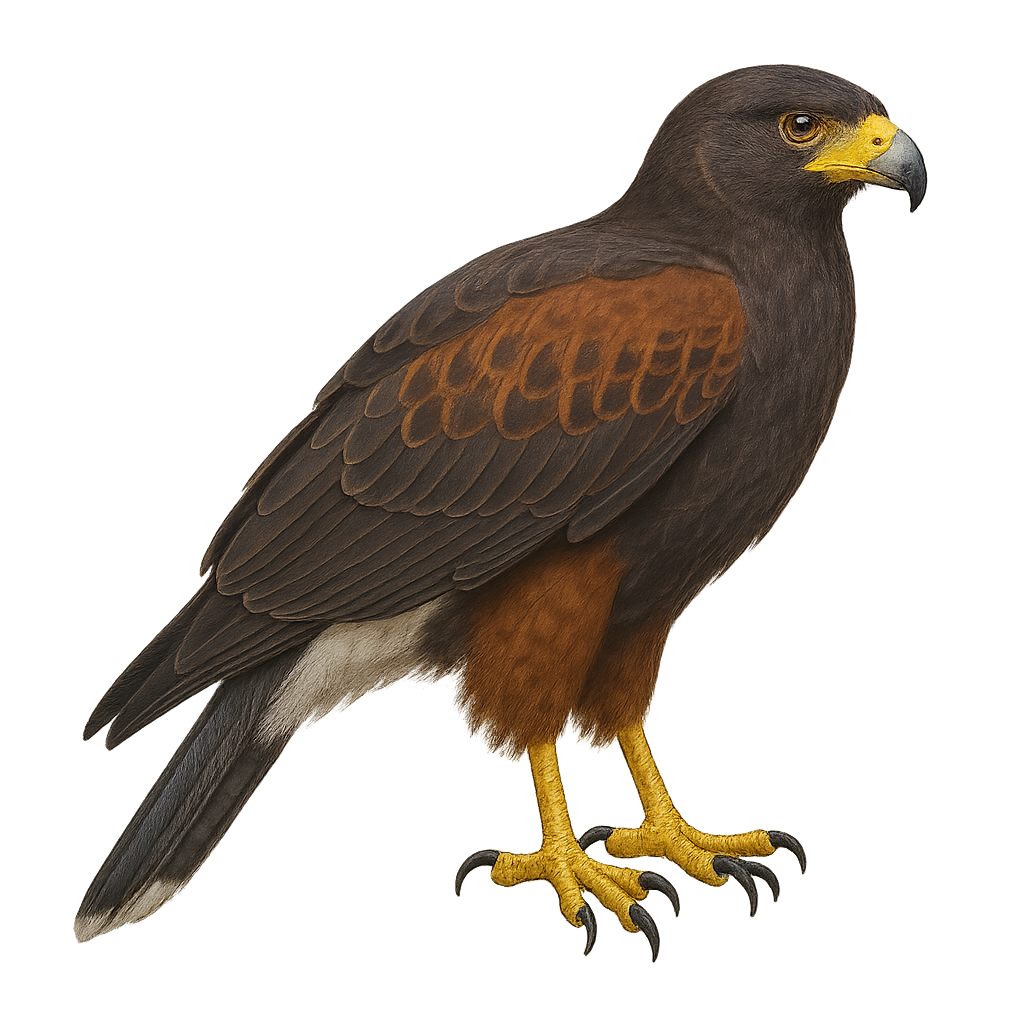Your wildlife photography guide.
Explore the harris's hawk in detail, study its behavior, prepare your shots.
Where to observe and photograph the harris's hawk in the wild
Learn where and when to spot the harris's hawk in the wild, how to identify the species based on distinctive features, and what natural environments it inhabits. The WildlifePhotographer app offers tailored photography tips that reflect the harris's hawk’s behavior, helping you capture better wildlife images. Explore the full species profile for key information including description, habitat, active periods, and approach techniques.
Harris's Hawk
Scientific name: Parabuteo unicinctus

IUCN Status: Least Concern
Family: ACCIPITRIDAE
Group: Birds
Sensitivity to human approach: Suspicious
Minimum approach distance: 10 m
Courtship display: March to April
Incubation: 33-36 jours
Hatchings: April to May
Habitat:
Deserts, savannas, mangroves
Activity period :
Primarily active during the day, with peak activity in the morning and late afternoon.
Identification and description:
The Harris's Hawk, Parabuteo unicinctus, is a medium-sized raptor known for its dark brown plumage, reddish shoulders, and white-tipped tail. It is particularly noted for its unique social behavior among raptors, often hunting in organized groups, allowing it to capture larger and faster prey. Native to the arid and semi-arid regions of the Americas, it adapts well to various environments, from deserts to mangroves. Its ability to cooperate and communicate with its peers makes it a fascinating subject of study for ornithologists. In captivity, it is often used in falconry due to its intelligence and ease of training.
Recommended lens:
400mm – adjust based on distance, desired framing (portrait or habitat), and approach conditions.
Photography tips:
To photograph the Harris's Hawk, focus on early morning or late afternoon hours when the light is soft. Use a telephoto lens of at least 400mm to capture precise details without disturbing the bird. Be patient and discreet, as this hawk, though relatively tolerant, remains suspicious. Aim for in-flight shots to capture its impressive wingspan and unique social behaviors. A tripod can be helpful to stabilize your camera during long observation sessions.
The WildlifePhotographer App is coming soon!
Be the first to explore the best nature spots, track rutting seasons, log your observations, and observe more wildlife.
Already 1 430 wildlife lovers subscribed worldwide

